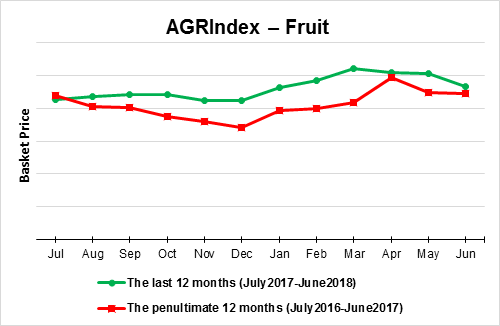
In June 2018, FRUIT prices continued their recent declining trend — the m/m change last month ...
Read more


ISET-PI has begun publication of a new product – the Budget Execution Monitor (BEM). The goal of the BEM is to forecast revenues and expenditures of the general government of Georgia for the cu...
Read more

After few months of strong GDP growth (November 2013-March 2014) a sharp decline in growth rate to only 2.7% (y-o-y) comes as an unwelcome surprise. According to the national statistic’s office, the VAT payers’ turnover is down and electricity demand has declined compared to April of last year.
Is this the reason for concern? Perhaps not just yet.
The GDP growth figures may be somewhat misleading, since they compare the level of GDP in this month to the level of GDP in the same month a year ago. Thus, if we observed an unusually high growth in one month last year, this year we might see significant decline. The slowdown in Georgia’s GDP growth this April seems to fit the pattern described above: High GDP growth in April of last year, but otherwise no dramatic changes in the economy.
Consider that April 2013 was a particularly good month for the country’s GDP. The pick-up in growth was mainly due to high seasonal activity in agriculture, in particular the Ministry of Agriculture’s (MoA) plowing and voucher program (see ISET Economist Blog by Juan Echanove). According to the MoA data, by May 2013, area of cultivated land in Georgia increased by 100% compared to the same period in 2012, and was at the highest level since 2005 the one-time programs provided a temporary boost to the economy, after which the country’s GDP reverted to the trend. Provided the normal trend continued afterwards, one would expect to see a drop in the year-on-year growth in April 2014. In fact, this is what we are observing in the data right now. Download the full report